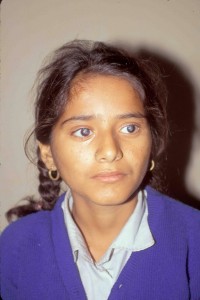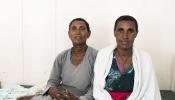From Johns Hopkins Medical
Cataracts can occur at any age, but they are most common later in life. In the United States, 75% of people over age 60 have some sign of cataracts. It is estimated that more than 20 million Americans over age 40 (approximately 17%) have had a cataract. That number is anticipated to reach about 30 million by the year 2020.


Blind Nepali teenager with cataracts in both eyes
What’s a cataract? A cataract is an opacification (cloudiness) of the eye's normally clear crystalline lens. Derived from the Latin word meaning waterfall, the term "cataract" arose from the ancient misconception that evil liquids flowing into the eye were the cause of cataract symptoms. The most common symptom of cataracts is cloudy or blurry vision. Everything becomes dimmer, as if seen through glasses that need cleaning. Most often, both eyes are affected, though vision is usually worse in one eye. Other symptoms include glare, halos, poor night vision, a perception that colors are faded or that objects are yellowish, and the need for brighter light when reading. In some cases, double vision occurs. The passage of light through a lens that has irregular areas of opacity can split the rays of light from a single object and focus them on different parts of the retina, causing double vision. Another symptom of cataracts is the need for frequent changes in eyeglass and contact lens prescriptions. The symptoms can develop over months or almost imperceptibly, over many years.

